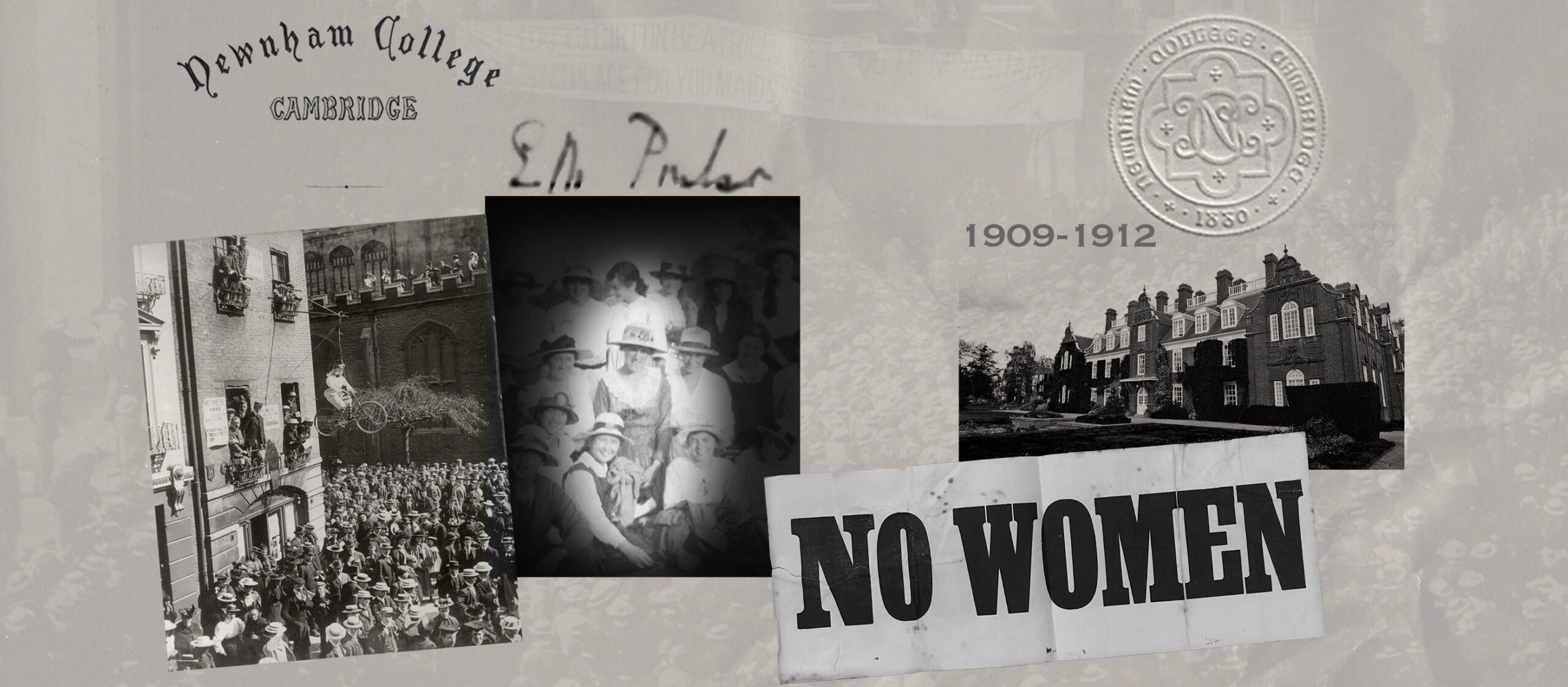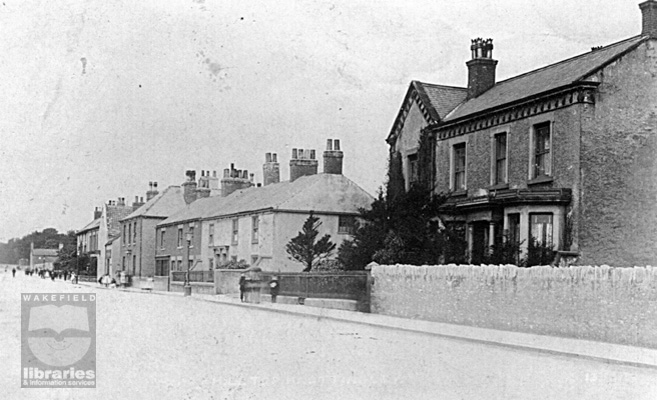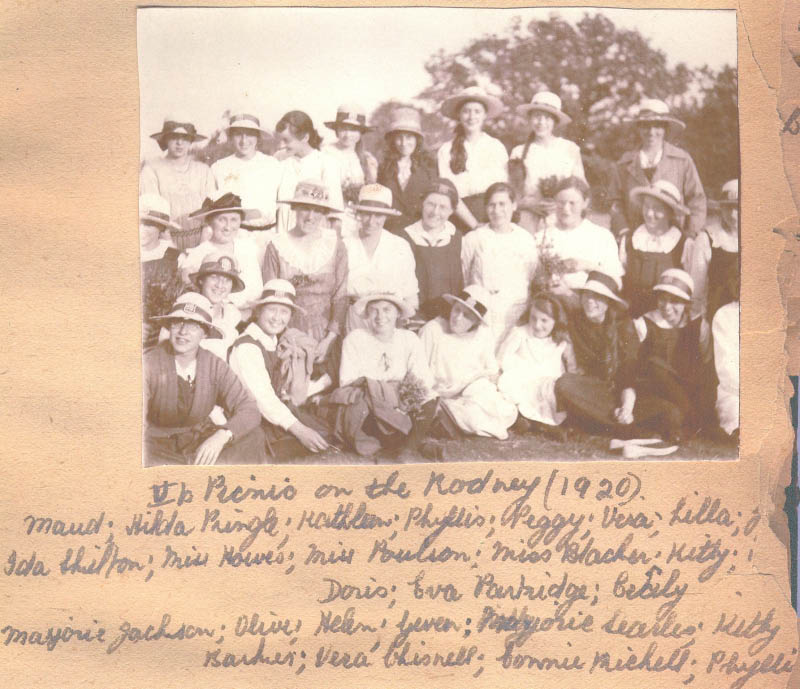My paternal grandfather’s oldest sister – 7 years older than John Ernest Llewellyn Poulson – was probably the reason her parents were married. She was born just 4 months after John Walden Poulson and Mary Ann Shepherd were married on Christmas Day 1889.
I knew her as Aunty Poul – half of Poul & Blacker, retired teachers, who lived in Chelmsford. Helen Blacker was the gym teacher at the Chelmsford Girls’ High School where both taught. I think I visited their house once – Emily died in 1966 – and don’t recall any stories about her other than my father saying she was the headmistress of a girl’s school (she wasn’t, but I think he believed that was a better part in the play if you were a “spinster” teacher) and him insinuating they were closeted lesbians! Aunty Goggie was the sister my grandfather was closest to as they had grown up together in Portsmouth; she was my Dad’s favorite aunt.
Uncovering more of Emily’s story showed an accomplished woman, even with the few pieces I’ve been able to gather via Ancestry, FindMyPast and the British Newspaper Archive.
At first, Emily’s family life was likely typical for a comfortably-off Yorkshire family in the late 1800s. Her father worked in his father’s pottery business in Ferrybridge, Yorkshire. She lived in Knottingley, next door to her grandfather & his second wife (John Walden’s mother had died from tuberculosis when he was a toddler). Around them were mariners (on the River Aire and the coastal trade), glass blowers, potters, rope makers and ship builders.
Emily became a big sister at 14 months old when Nellie Gwendoline was born. Another sister, Lilian Gertrude, was born in May 1893, but sadly (not uncommon for the time) Lilian died, age 3, in 1896, 10 days after yet another sister, Doris Marguerite (Goggie) was born. Membranous Croup was on Lilian’s death certificate – luckily the newborn Doris was OK. It’s likely Emily didn’t see much of her father in her early years – he was a manager at the Poulson Brother’s pottery, played a lot of cricket, got involved in local politics, and in 1893 was wrapped up in an election scandal and the lawsuits that followed. From 1896 through at least the time Emily moved on to Wakefield Girl’s High School in 1902, John Walden Poulson was a member of the Knottingley School Board, so should have been a good position to know the best elementary school for Emily, but I don’t know which school she attended.
Emily was joined by her only brother (my grandfather) in June 1897. May 1899 was a terrible month : Emily had her 9th birthday on May 7th, another sister, Mary Sybil was born on the 23rd, and sadly, her mother died – just 29 years old – on May 27th. I can’t imagine this was easy for such a young girl to cope with, and her sister Gwen recalled that although their stepmother Emily, Mary Ann’s younger sister, was a nice Aunty, she wasn’t a very nice Mother.
In 1902, Emily became a student at Wakefield Girl’s High School, possibly as a boarder given the distance between Knottingley and Wakefield. The school was selective and the local education authority paid for partial scholarships – in other words Emily must have shown promise based on her elementary school work.
Smallpox closed the school briefly in 1903 but vaccination was mandatory at the time – no mention in the newspaper stories about the outbreak at the boys’ grammar school or the girls’ high school of Emily getting sick.
In 1907, the Sheffield Daily Telegraph posted a list of students who were successful in the Cambridge Higher Local Examinations, and Emily was in Group A (not entirely sure what that means). in 1908, the High School’s speech day was covered in the Wakefield Herald and Emily was awarded one of the grade prizes for Form VI (I assume lower VI). I noted that Emily’s name never came up in the prizes for “early and regular attendance throughout the year”!
In the Wakefield Herald’s coverage of the 1909 Prize day, Three students gained Governors’ Exhibitions for Newnham College; M. Plews, head girl (who had been at the school since kindergarten), Emily and Doris Glover. Emily and Doris also gained “County Major Exhibitions”, which I assume translated into more scholarship money. M. Plews came first in the Governors’ Exhibition and Emily second, but Ms. Plews kindly offered to share the scholarship with Emily which is delightful. Perhaps they had become friends? Both were to study the same subject at Newnham College, mediaeval and modern languages. Doris Glover was to study history. All three of them gained an honours Higher Local certificate (you have to pass in three groups and get honours in two of them).
If the above wasn’t enough, the three excellent students also entered for the matriculation of the Northern Universities Examination, and were all placed in the first division (again, not sure what that means, but it sounds very good!). Other Wakefield Girls’ High School students entered for the Associated Board of the Royal Academy of Music and the Royal College of Music – all who entered passed. This was not a place for slackers…
The West Riding Education Committee awarded Major Scholarships (don’t know how much of their tuition this covered; the newspaper article didn’t specify the amount) to Doris Glover and Emily.
I had formed a very positive opinion of the school’s headmistress in pushing for girls to get an excellent education in a time where that wasn’t thought to be of value. Also for thinking progressively about education – from a speech day address she emphasized that the school focused on “…training of the thinking power and intelligence in the place of the acquirement of knowledge”. Positive thoughts fled in horror when I found the “Illogical Ladies” tidbit in the Leeds Mercury! Even a Newnham-educated progressive woman carried with her some of the dogma of her age.
The next mention of Emily in the local papers is in 1912 when they proudly report on how well the two local girls had done. What I didn’t realize is just how novel an event it was (relatively speaking) for women to attend Cambridge. A little searching led me to the history of Girton (the first women’s college in 1869) and Newnham (1871) and that in 1897, not that long before Emily started in 1909, there had been a riot by male students when a vote was taken on the University (versus the womens’ colleges) granting degrees to women. This wasn’t a cerebral debate. Another vote in 1921 failed. It was 1948 before Cambridge started awarding degrees to women. In 2019, Cambridge celebrated 150 years of women at the university. You can read a little more history here and here.
In the 1911 census, taken on 2 April, Emily was with her grandfather Edwin Llewellyn Poulson in Knottingley – perhaps on a half-term break (Easter was 16 April that year)? There was no father to visit as in 1910 he had abandoned his family and moved to Canada. Her sister Gwen was training as a midwife at Lloyd Hospital in Bridlington, Yorkshire. Goggie and John were in Portsmouth with their Aunt Mary (John Walden’s older sister) and Millicent and Suzanne were with their maternal grandfather John Henry Shepherd in Ferrybridge. Emily’s education was complete in 1912 and her first job was as an assistant mistress at the Girls’ High School in Crediton.
In 1915, Emily moved to the Chelmsford County Girls’ High School where she stayed until retirement in 1950. Electoral rolls show a group of teachers shared a house, first at 91 New London Road and after 1928, Emily, Helen Blacker and Winifred Peers (another teacher at the school) moved to a house at 23 Galleywood Road (with a husband & wife couple who took care of the domestic arrangements). I don’t know if Emily owned the house, but she was the ratepayer (she had a Juror note next to her name and at the time there was a property qualification to be a juror). When her grandfather died in 1925 she was bequeathed £250 (about £16,000 in 2022) which might have made it possible for her to buy a place.
Emily attended her wastrel father’s third wedding in London 1921 (he had returned from Canada in 1916), but shortly after that his fraud and embezzlement charges sent his life into a tailspin. There’s a photo of Emily visiting my grandfather in 1926, I think when Gwen & family came to England, and this photo with Goggie and my father from 1927. I didn’t hear stories about visits from Aunty Poul and there aren’t any photos in the albums I’ve inherited, so I think she centered her life around teaching and her school. In 1932 Emily went to Australia to visit Gwen, but after that I don’t think she saw Gwen again.
A long time ago I found some photos posted by old girls from Chelmsford County Girls’ High School that included Miss Poulson & Miss Blacker. Teaching doesn’t make you rich, but when Emily died in 1966, she left her estate to Helen Muriel Blacker.










